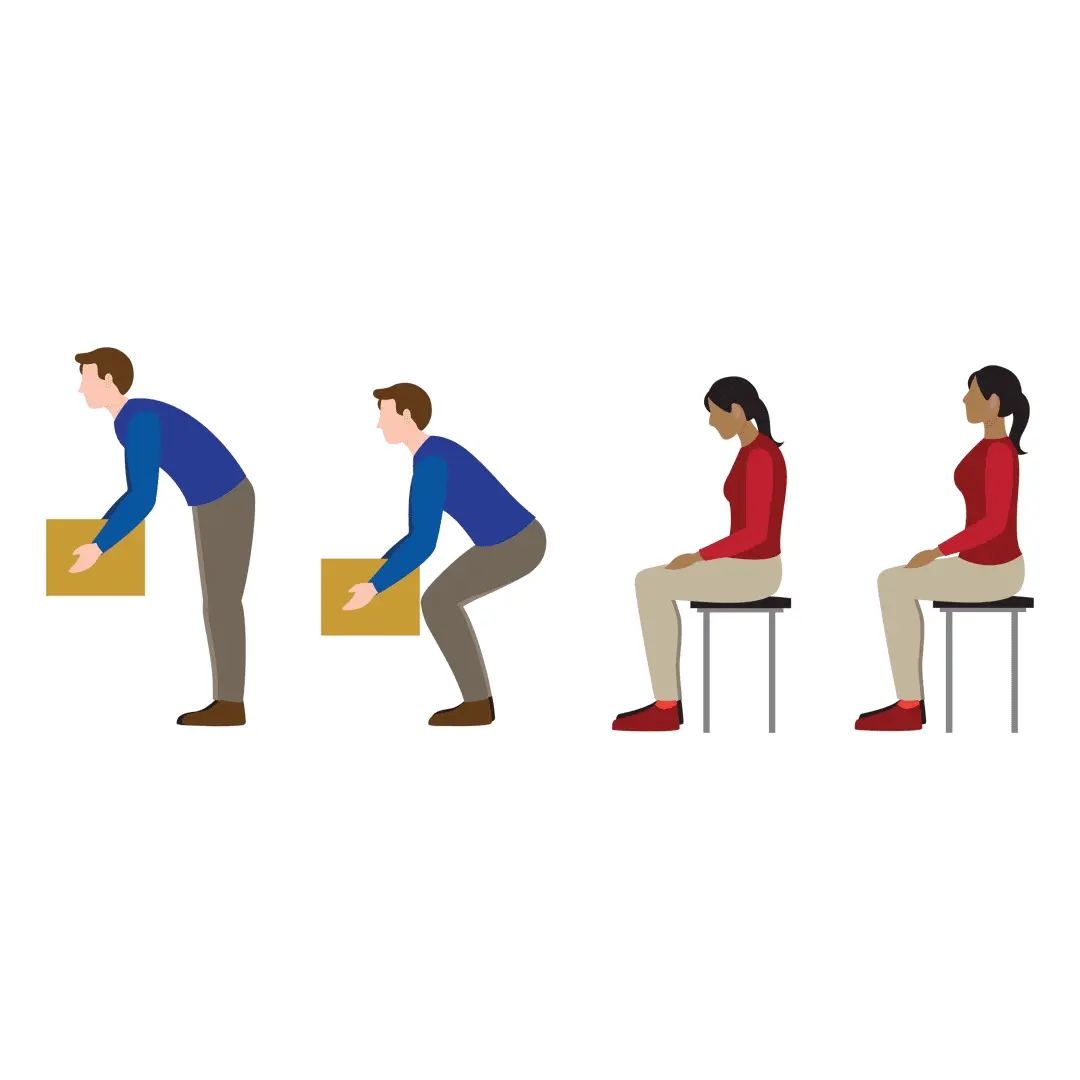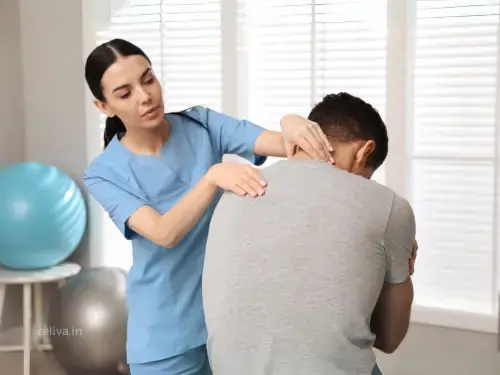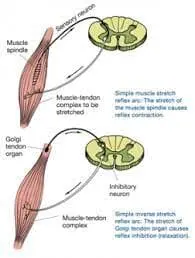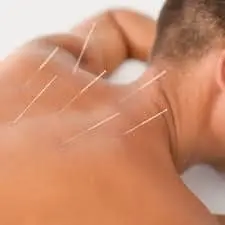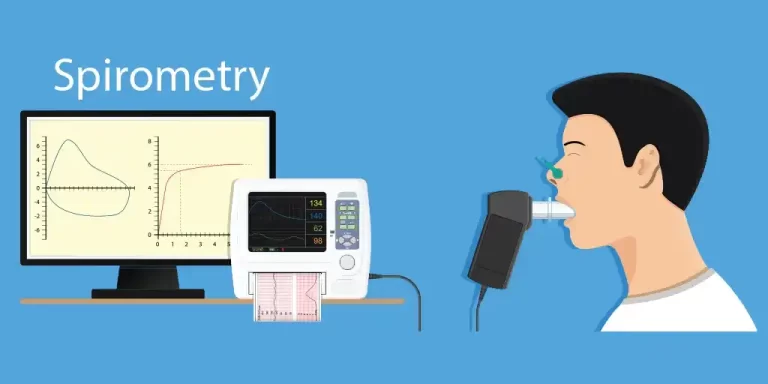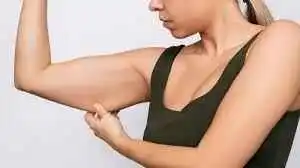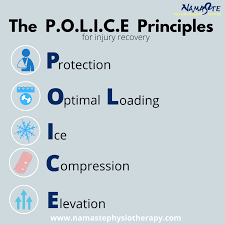Proper Body Mechanics and Physical Therapy
How Do Body Mechanics Work?
Proper body mechanics and physical therapy are foundational components in the maintenance of musculoskeletal health, prevention of injury, and rehabilitation. Understanding and implementing correct body mechanics—how we position our bodies during various activities—can significantly impact our overall physical well-being. It involves the efficient and safe use of the body during movement and rest, reducing the risk of strain and injury.
Understanding how our bodies function during physical actions like lifting, pushing, and pulling is known as body mechanics. Reducing the risk of injury and wear and tear on the joints, muscles, and other body parts can be achieved by maintaining proper position, posture, and movement patterns. We call this proper body mechanics.
Using proper body mechanics can help prevent general health and wellness issues, improve athletic performance, and prevent work injuries. By employing correct body mechanics, we can lower the chance of overuse injuries and relieve pressure on our bodies by using our muscles and joints correctly.
Our spine is at risk of abnormal causes when we move dangerously or wrongly. The danger of harm, unnecessary aging over time, and disc and joint degeneration in the spine are all regulated by these strains.
In addition to raising our energy levels, strengthening our overall strength, and improving our quality of life, proper body mechanics can reduce our chance of injury. Through learning and applying the fundamentals of proper body mechanics, we can improve our physical capabilities in every part of our daily lives and prevent physical damage to our bodies.
The term “body mechanics” describes how our bodies function during daily activities. It is related to how our bodies behave while we sleep, stand, sit, lift, carry, and bend. Back issues are often caused by poor body mechanics. Unsafe and incorrect shifting places the spine under excessive strain, which can eventually lead to damage, loss, and unnecessary decrease of spinal components including discs and joints. It is important to understand the foundations of proper body mechanics because of this.
Good body mechanics is the process of using a person’s power to its maximum mechanical advantage to complete a task effectively without being hurt. An action does not have to be “heavy” or appear difficult to risk our safety. Over time, poor body mechanics weaken our bodies and lead to a multitude of injuries. Since maintaining good body mechanics is important to ensuring the health of your spine, it’s easy to include these suggestions in your everyday routine.
Fundamentals of Body Mechanics:
Our bodies are used in a variety of ways whether lifting, carrying, standing, sitting, bending over, and sleeping. Poor body mechanics are a common reason for pain in the back. Our spines may be under additional stress when we move in a way that puts us at risk for pain and problems now and in the future. This is the reason it’s important to know the fundamentals of body mechanics. Injuries and back pain can be prevented by learning safe movement techniques from experts who will help you finish all of your tasks.
Analyze the situation
- Plan the things you wish to do. Think about the item you wish to shift and the method you want to use.
- By examining the path to be taken, cleaning the pathway, and opening the doors, for example, you can lessen the chance of slipping or falling.
- Explain your strategy and purpose if you are lifting with help from another individual.
Look for support
- If the weight that needs to be lifted is too big, No matter the weight or length of the wait, get support.
- If required, divide the load into two or more rounds.
- Make wise decisions.
Check the foot
- Spread out your feet to create a wider base of support for better stability and balance.
- Find out that you are wearing secure, non-slip footwear.
- Avoid going barefoot, in high-heeled shoes, or with loose clothing.
Approach closely
- Instead of reaching for it from a distance, pull the thing closer to your body and hold it with your arms bent.
- Avoid making an aggressive grab movement.
- Never attempt to grasp something slippery.
Flex your knees and hips when bending
- No matter the object’s size, you should always raise it with your legs and your power-lifting muscles rather than your back.
- Use a wide range of supports and maintain a low center of gravity.
Rise
- Raising the weight gradually with your leg muscles is preferable to quick, sudden movements.
- Prioritize using the muscles in your trunk and legs over the weaker arms.
- Always contract your abdominal muscles before lifting anything.
- First, test the object to make sure you can lift it safely.
Be fluent and well-organized
- Stay away from the strain that comes with jerky, fast motions.
- Before lifting as a group, make sure that everyone is prepared. Then, count to three and lift.
- Take care to release your breath as you rise.
Turn slowly and avoid twisting
- Put your feet in a step.
- Keep your trunk straight and your feet off the ground when carrying any form of load.
Getting moving on wheels
- Anything that can be moved around should ideally not be carried.
- Always push rather than pull in all you do.
Principles of good body mechanics:
- Maintain a Stable Center of Gravity
Keep your center of gravity low.
Maintain your back straight.
Flex your knees and hips.
- Maintain a Broad Support Network.
You’ll have the greatest stability possible when lifting if you do this.
Keep your feet apart from one another.
As you get closer, just put one foot in front of the other.
To process unexpected events Bend at the knees.
Turn your feet.
- Keep your force in control.
The base of support should be surrounded by vertical lines of support.
Make sure your back is straight.
Remain close to the object you are raising.
- Maintain the Proper Body Alignment.
Bring your lower bottom in.
Curl in and elevate your lower back.
Maintain your back flat.
Keep your head up.
Pull your chin in.
Continue walking forward and use your outside feet for support.
Posture:
Proper body alignment is necessary for effective movements.
An individual with good posture is not overly leaned forward or backward and has a neutral spine.
In a neutral posture:
- Stay away from potentially harmful “awkward” postures.
- Try to maintain a nearly neutral stance when working and performing daily tasks.
- Everyone constantly switches between the “neutral” posture and alternatives. (as in reaching, moving forward, etc.) The goal is to stay as neutral as possible.
- Avoid applying excessive force (such as pulling pushing, or lifting) on our support system’s surface.
Standing:
The majority of the lives of millions of people are lived in constant motion. Bending, lifting, carrying, and reaching while standing can strain the back greatly, particularly if the right body mechanics aren’t being used. These suggestions can help reduce the likelihood of back strains when standing for extended periods.
- Avoid being still for long periods.
- Change positions as frequently as you can. This will reduce tension in your spine, improve circulation, and reduce muscle pain.
- As much as you can, stretch. Easy stretching exercises that are performed during a break might help relieve muscle tension.
- Think about the way you stand. Make several checks during the day.
- Verify that the surface you are standing on is level and stable.
- On a comfortable surface, try to relax. Can help in reducing tiredness when standing for prolonged durations.
Some more important things to remember;
- Be careful not to twist or bend in the other direction when lifting something. Bend at the knees and face the thing, as opposed to bending your back.
- Before lifting, move as near to the object as you can and approach it straight. Aside from keeping your shoulders apart, make sure your feet are flat on the ground. Bend at the knees and lift with comfort. Apply the same motion the next time you set the object down.
- Avoid going too far. If you have to reach up to anything high, make sure you are standing on a level, sturdy platform.
- Avoid taking a heel position. Standing for lengthy amounts of time in this posture is not only risky, but it can also overstress the neck and back.
Pain Reduction and Posture Improvement Exercises:
- Three to five times a week, spend 25 to 60 minutes walking.
- Imagine that you are the tallest person you can be because the cord is pushing your head upward.
- Maintain the normal forward curve in the minimal arch of your lower back.
- You can reduce and arch your back to discover the center of motion and your lumbar neutral position. Once you have located this halfway position, your pain should reduce.
- Every five to ten minutes, move with one foot on a tiny box.
- Put on comfy, supportive shoes or footwear.
- Typically, shift your weight from one foot to the other.
Sitting:
Maintaining good body mechanics is essential when working at a desk or watching television at home. If you work at a desk all day, you may consider purchasing an additional ergonomic chair.
Good sitting position,
- Place your bottom on the back of the chair’s seat, leaving a tiny gap between it and your knees.
- With your feet firmly planted on the floor, bend your knees to a ninety-degree angle.
- Pull your shoulders back as you elevate your chest.
- Your chin should lift into it as your jaw and mouth relax.
- Make sure your arms are supported by the weight of your chair if it has armrests.
- Just make sure you are tall enough to avoid stooping or lowering yourself too much.
- Using footrests is a considerate method to keep your posture correct when seated.
- Verify the position of the footrest to make sure that your knees are freely bent and resting on your hips.
- Verify the amount of support your lower back is receiving. Look out for a chair that offers good lumbar support. If that isn’t available, you can still extend back support by performing a lumbar rotation, or you can get the same amount of support by placing a rolled-up pillow or cloth behind your lower back.
Keep in mind that sitting in the “correct” posture for prolonged periods can eventually hurt. Never forget to stretch, stand up, move around, and take breaks! This will help prevent stiffness and muscular weakness and lessen the strain on your spine.
Lifting:
The lower back is particularly subject to damage because it takes a lot of strain. while shifting furniture.
It’s important to take safe lifting practices and good posture to prevent injuries. Finally, you should become proficient at lifting large weights.
The following are guidelines for safe lifting procedures;
- Put the load in front of you right away.
- To do a complete lunge or squat, bend your knees.
- Stay flat and neutral on your back.
- Extend the muscles of the buttocks and lumbar region to connect to the back.
- Now lift yourself onto your legs so that you are standing.
Do Not:
- Lift a twisted or sideways person.
- Standing up is necessary if you are leaning forward or unstable.
Overall suggestions:
- Accept your limitations.
- Take a minute to consider what has to be done.
- Continue to breathe with the proper control.
- Request help if you require it.
- Give it a little time.
- Be careful with your safety!
Keeping your body in proper alignment is important for maintaining your spine healthy. It’s also easy to put these concepts into your regular routines. It may feel uncommon at first, but if you put in the work, it will quickly become routine.
Pulling and pushing:
Avoid attempting to push or pull large, heavy objects, such as furniture.
- Examine your work. You should never twist or bend when pushing or pulling.
- Maintain a position where your arms are closely joined.
- You can change your weight by bending your legs at the knees.
- At all times, keep your posture in the proper alignment.
- Mopping, sweeping, and vacuuming are examples of push/pull chores.
Bending and Turning:
- Bending and rotating put stress on the spine. It is important to have proper alignment and posture for these motions.
- Step out onto the ground with your feet shoulder-width apart.
- Place both upper arms at your sides and touch your ribcage. This is not necessary if one or both hands are being utilized for support.
- Throughout the entire bending motion, keep your back straight and your posture upright. Squeeze your shoulder blades together.
- Stretch at the hips and knees as an alternative to bending at the waist. Your back will remain upright if you bend at the hips and knees.
- Bending at the waist will round out the upper back, putting stress on the bones and raising the possibility of fractures.
- When you shift directions, make sure your feet move with your body.
- Avoid bending your back.
- Bend your knees slightly and turn on your toes or heels. Keep your knees bent, your face straight, and your toes pointed.
Reaching out:
- Step one foot in front of the other and reach overhead with one hand.
- Put your weight on your front leg and extend your reach forward.
- Although a reaching tool might be useful, it should only be used to lift light objects while keeping the spine straight.
- To reduce unnecessary bending and reaching, rearrange work areas (such as the kitchen, closet, or hobby room) so that commonly used things are kept at mid-body heights, or between your head and knees.
Advice for reaching out;
- Move your body closer to the thing as you attempt to grasp it.
- Avoid going too far from your network of support.
- Make sure items you use often are close at hand.
- Avoid bending, twisting, and straining in an attempt to reach.
- Make use of a step stool if required.
Getting Prepared for Bed:
Taking a nap;
We spend approximately one-third of our lives in bed, so we cannot ignore the position of our bodies while we sleep. Even in bed, we should make an effort to keep our spines neutral during the day.
- Verify the comfort of the mattress you are resting on.
- Avoid sleeping on your stomach or with an excessively large pillow; instead, keep your head down. In these situations, the back arching causes tension in the spine.
- The optimum positions for maintaining a neutral posture are on one’s side or back, so anyone with neck or back problems should always be in these positions.
- Use a pillow that will allow you to maintain a neutral head-to-body alignment. Many large pillows may look fantastic on an artificial bed, but they may not provide the proper back support for you when you sleep.
Getting ready to go to sleep;
- With good posture, body mechanics, and position, sit on the edge of the bed.
- With both hands on the bed, tilt toward your head.
- Hold your body up with both hands.
- Lying on your side, place both feet on the bed with your knees bent and your arms extended in front of you.
- Turn onto your back with one movement. To brace your back and avoid twisting during the movement, pull your belly button in with your stomach muscles.
- Confirm that your face, knees, and toes are all pointing in the same direction.
- Avoid elevating your head or upper back when shifting in bed. Because of the strain, your spine may become injured.
- Avoid using extra pillows to support your head and upper back. The upper back becomes straight as a result. You may require two pillows to support your neck if your head is tilted forward and your upper back is rounded.
- When resting on your side, position a pillow between your knees and under your head to help keep your spine in the proper alignment.
- When lying on your back, place a pillow under your head and each knee.
Getting Out of Bed;
To get out of bed, repeat your steps from getting into bed.
- Keep both of your arms extended in front of you.
- Pull your stomach in and take a breath as you turn onto your side. Maintain a pulled-in stomach.
- Lift your upper body with your hand while you cross your legs over the side of the bed. This is a single movement.
- Some people may feel lightheaded as they shift from the lying to the sitting (and from the sitting to the standing) postures. To lessen any lightheadedness, sit on the edge of the bed for a minute or two before getting up.
- When lying on your back, never lift your head or upper back to sit upright or to get out of bed.
Walking:
- Put on properly fitting shoes that are not slip-on.
- It is advisable to use not slippery material for the soles.
- Maintain an upright posture, pull your chin in, and slightly compress your shoulder blades together. Standing and this position are similar.
- Point your feet forward, not back or sideways.
- Face your knees now.
- Keep your back and neck straight and the natural bend of your lower back unaffected.
- As you walk, make sure your foot landings are gentle.
- Pulling in the abdomen with your stomach muscles will help develop your core muscles.
- Allow your arms and shoulders to move naturally and freely.
Climbing Stairs:
- Taking the stairs is a quick and simple way to exercise and can help you maintain your bone density.
- Always consult your doctor to find out whether climbing stairs is safe for you. When performing this activity, go slowly.
- Maintain an upright posture, pull your chin in, and slightly compress your shoulder blades together. The standing position is similar to this position.
- Point your feet forward, not back or sideways.
- Face your knees now. Place your feet so they are almost shoulder-width apart.
- If you are stable, connect to the railing for your safety.
- If your gait is stable, Try to keep your hands off the railing.
- As you climb each step, focus on using the rails to elevate yourself and your leg strength.
- Pulling in the abdomen with your stomach muscles will help develop your core muscles.
- Take caution when descending stairs to avoid falling.
The role that good body mechanics play in avoiding injuries:
The movements needed to sit, stand, bend over, lift, and move objects are made clear by body mechanics. It is possible for lifting, squatting, and carrying heavy objects to worsen back or knee pain in individuals who already have it. It may be caused by frequently working outside with improper body mechanics. People of all ages may be impacted by these activities, and poor body mechanics could worsen joint issues.
Even though some people may believe that their poor posture has never caused them any problems in the past, pause and take into consideration the reality that many injured people developed their injuries as a result of one or more difficult lifts, which in turn caused a depressing pattern of chronic or repetitive back pain.
It doesn’t matter whether you’ve been doing something like this for the past 20 years. Our bodies fight so hard against the pressures we apply to them daily. It may even seem as though a single child lift, done with your back bent and your knees moving gently, is all it takes to start problems.
Dealing with Seated and Wheelchair Visitors:
Visitors in General;
- Make a plan and arrange the equipment correctly.
- Marked off regions with obstructions.
- The smallest possible distance should be used to lift or transfer an individual.
- Interact with visitors and other employees.
- Give the visitors as much support as they need.
- Apply the overall body mechanics idea.
- Do not feel embarrassed to ask for support when you need it.
- Always manually lift or move an individual by yourself; if necessary, use a mechanical lift with the help of at least two staff members.
Components of Body Mechanics:
Coordination of muscle contraction and brain activity is necessary for bodily movement. The key components include balance, suitable body alignment, and coordinated movement. Body parts are affected by posture and body structure to best support stability and natural functioning. To reduce the strain on their joints, muscles, tendons, and ligaments, a person’s body needs to be carefully examined whether they are sitting, standing, or lying down.
A related body pattern is produced when two body parts reflect one another in a vertical or horizontal line. Proper distribution reduces stress on the musculoskeletal system and improves balance. When this balance is disrupted, falls and injuries are more likely to occur.
In terms of body mechanics, the weight center of an object or person is referred to as the center of gravity. A smaller center of gravity is necessary to maintain stability. One technique to do this is to bend your knees and shift your center of gravity toward the base of support while keeping your back straight.
The strength of the base provides a wide base of support. Take a step with your feet shoulder-width apart to give yourself a wide base of support. Body balance is attained when a vertical line emerges from the center of gravity between the broad base of support. The body becomes unstable when the vertical line moves and passes the support’s base.
Lifting techniques and injury prevention recommendations.
- When loading, try not to flex your spine all the way, and rotate your trunk using your hips.
- To minimize the response stress on your lower back when lifting, align yourself.
- You can do this by bending over, kneeling, or taking other comparable positions that keep the external weight close to your body.
- Avoid spending too much time sitting down.
- Take your employment requirements into consideration when selecting the best rest break techniques.
- Gain knowledge about joint-protecting mechanical movement.
- Maintain a proper level of physical fitness.
- External pressures are directed into your lower back in the advantageous direction when you pull on a door handle or use a vacuum, for example.
- Use techniques that lessen the load’s actual weight when handling it.
- Give yourself some time to allow the ligaments to heal, your spinal center to stabilize, and the circular stress to settle after extended flexion before activating your muscles.
- Refrain from bending over or lifting anything after getting out of bed.
- Maintain posture and back stability when working on easy tasks.
- Avoid bending too high at the same moment.
How to benefit from body mechanics in sports:
Should you have experienced a sports injury, you are aware of how it may affect your ability to train, compete, and engage in everyday non-athletic activities. It has been discovered that programs centered on neuromuscular control improve overall sports performance while lowering the chance of injury.
The capacity of your body to identify, change, and tolerate the unique demands of sports is important for preventing injuries and maintaining top physical performance over time.
Sports-related injuries, such as uncontrolled body motions and improper muscle contractions, can be caused by athletes who have difficulty with proper body mechanics and motor control. Non-contact injuries are frequently the result of braking or changing direction. Fortunately, with the help of skilled therapists, you can improve your body’s movement and prevent injuries while also performing better.
Training requires you to understand the mechanics of your body and how it moves in an athletic stance. Your ability to run, jump, slice, and catch, and how your muscles supply them are all influenced by the arrangement of your spinal vertebrae. In other words, your body cannot work as well if you are bending over.
Physical therapists with the necessary training can teach athletes how to “feel” where they are in space. Physical therapists specialize in coordinating the neurological system with the muscles and joints of the body.
Body mechanics training provides benefits to improve athletic performance and avoid fatigue and injury. The benefits of the training can be improved by focusing on the right muscle group to avoid the need for other muscles to compensate. Proper body mechanics can help burn more calories because they speed up physical activity.
The alignment and control of the body:
Educating learners on how to maintain the health and functionality of their muscles, ligaments, and joint structures through aerobic activity, relaxation, and strengthening techniques are all important components of education.
When standing, a footstool can protect or reduce strain on the back; when sitting, a lumbar pillow can support the back.
Maintain a balance between your personal and professional life to prevent signs of particular issues or chronic overload disorders.
You have complete control over how you feel toward life, your behavior, your posture, and your use of your body.
Physical therapy:
- Teach patients about correct body mechanics. [The Benefits of Proper Posture]
- Muscle strains, especially involving the back, are a common complaint among patients who come to the clinic.
- Many people experience back strain as a result of improper object movement and carrying skills. Lifting correctly would be the optimal method.
- Back, neck, and shoulder pain are commonly reported as a result of poor posture because the muscles are misaligned. Bad posture not only affects gait but also raises the possibility of back and knee issues.
- Physical therapists can help people prevent all of these injuries by recommending postural adjustments.
- Once a person’s posture has been evaluated, look over the ergonomic requirements of their workplace and recommend suitable exercises or approaches that will help them with their everyday, athletic, or professional posture.
- Stretching and massaging tense muscles will help release them, as well as loosen up stiff joints.
- Instruct safe lifting techniques and build the necessary muscle groups.
- Verify that your core muscles are active and functioning.
You must maintain correct body mechanics for the health of both your spine and your body as a whole. These ideas are easy to work into your daily life and relate to a wide range of activities. Your body and back are forever grateful to you for regular exercise.
Precautions in general when performing physical tasks:
- It is easier to move, push, or pull a thing than to raise it.
- Jerky movements are not as good as smooth and well-coordinated ones.
- Moving forward demands less energy and force than stopping and starting again.
- Use your leg and arm muscles to their fullest potential, and your back muscles as little as possible.
- Make an effort to work as close to your body as you can. Your back, legs, and arms will feel less tension as a result.
- With your feet positioned backward or front, use a pulling or pushing force with your body weight.
- Keep your work height comfortable to avoid excessive waist bending.
- Maintain physical fitness to reduce the likelihood of injury.
Summary:
To lower your risk of spinal fractures and other back injuries, you must master safe body movement strategies. It’s necessary to understand how to move and conduct daily tasks like getting in and out of bed and picking up items off the floor without straining your spine. Move your body while maintaining a good posture for your spine to do this. By employing the right body mechanics, you are protecting your spine.
Body mechanics is the study of how your body functions in performing daily actions. By utilizing correct body movements during sitting and standing, strain and stress on the bones and joints can be minimized. You can stay active for a longer time and prevent broken bones and disabilities by doing this.
FAQs
What is the foundation of body mechanics that offers support?
The term “base of support” (BOS) refers to the space base of an object or person, including all points of contact the object or person makes with the supporting surface. These points of contact can be the hands or feet of the person using them, or they can be items such as a chair or crutches.
Does taking a different posture feel awkward?
Initially, you won’t be used to it, so attempting to sit or stand straighter will feel weird. Because your postural muscles may have declined and become quickly exhausted, it may be difficult for you to maintain good posture for prolonged periods. It’s typical to do this.
Is posture correction achievable with physical therapy?
A qualified physical therapist can help you improve your posture by strengthening the weak muscles that cause bending and improper alignment. Your therapist will modify your treatment plan to deal with any painful ailments or postural problems you may be facing.
Body mechanics for safety: what is it?
Body mechanics now analyzes how your musculoskeletal system works as a whole to provide and preserve balance and posture. Knowing how your body functions will help you avoid injuries and allow you to perform your job more safely and efficiently.
What are the positive aspects of body mechanics?
Improved physical capacity, correcting and preventing poor posture, and decreased strain on tendons, ligaments, and joints are all linked to proper body mobility. We call this training in body mechanics. The two benefits of body mechanics training are improved muscular skills and a decreased chance of injury and weakness.
What is body alignment?
The way the head, shoulders, spine, hips, knees, and ankles are positioned and connected is described by the anatomy of the body. An ideal body composition reduces the strain on the spine while helping to maintain proper posture.
How can I properly practice body mechanics?
Maintaining a modest distance between your feet, take a step forward with one foot.
Maintain a straight back.
Twist starting at your hips and knees.
Do not bend from the waist.
As you raise the object, use your arm and leg muscles.
Hold the thing close to your body at waist height.
Which posture is best for your body?
Developing proper posture is important. Keep your head back and avoid bending over. Your hips should be over your ankles and your ears should be over your shoulders, maintaining the natural curves of your lower back. Seated upright, tilt your head forward.
Which four objectives is body mechanics trying to accomplish?
When body mechanics are applied correctly, energy is distributed, physical strain and stress on body structures are reduced, self-injury risks are minimized, and safe movement patterns are produced.
What makes good posture and why is it important?
We’ve heard time and again how important good posture is, including when it comes to sitting up straight. To minimize the amount of strain and tension on the ligaments, muscles, and joints, physical therapists urge their patients to maintain proper posture when sitting, standing, or lying down.
What leads to poor posture?
Poor posture can lead to several issues, such as round shoulders, back pain, and severe joint degeneration. Modest lifestyle changes can significantly improve your spinal health and posture.
Which muscles are used to control posture?
Numerous muscle groups, including the hamstrings and major back muscles, are essential for preserving our posture. We are not forced forward by gravity when these and other postural muscles are functioning properly. Additionally, postural muscles help us maintain our sense of balance when we move.
Why is body mechanics so important?
Maintaining proper body mechanics can help you avoid back pain and injuries during regular activities and at work. Minimizing muscle tension and tiredness while seated at a computer desk can be achieved by maintaining proper body alignment and posture.
What factors affect the alignment and movement of the body?
Changes in the center of gravity due to obesity and loss of soft tissue tone are often noticed by people. As a result, the center of gravity changes with every bodily posture, and both the muscle pull and the joints’ ability to support weight change within normal bounds.
Why is body mechanics important to physical therapy?
Applying the right body movement to prevent and correct poor posture, reduce stress on tendons, ligaments, and joints, and enhance physical capabilities is known as body mechanics training. Body mechanics training decreases stress and injuries while improving sports performance.
Body mechanics and tools: what are they?
A combination of posture, balance, and motion, body mechanics affects the body’s ability to move in sync and where stress is placed on it. Standing or sitting with proper posture requires developed skills that require training and repetition.
References:
- Correct Body Mechanics: How to Keep Your Spine Healthy. (At now). at https://www.coloradospineinstitute.com/education/wellness/ In-text body mechanics Reference: (The importance of proper body mechanics – preserving the health of your spine, n.d.
- Dangeti A (n.d.). Human Physiology, Body Mechanics, Scribd, https://www.scribd.com/document/163371842/ Dangeti (n.d.) is cited within the text.
- Sept. 7, 2022; Vancura, C. Introduction to Body Mechanics. Physical Rehabilitation at Timberlane. Fundamentals of body mechanics: This page is https://timberlanept.com/blog/index.php Internal citation: (Vancura, 2022)
- P. (2008, January 8). instruction on bodily mechanics. Superior Aquatic & Physical Rehabilitation. Body mechanics training, on the other hand, emphasizes the hips and knees (https://advanceaquaticpt.com/body-mechanics-training/
- Dodson, A. (2018), December 10. Appropriate Body Mechanisms preferred physical therapy. preferred physical therapy. suitable body mechanics The following URL points to an internal reference: (Dodson, 2018)
- 2022, December 26: Posture, Body Mechanics, Ergonomics, Coppola Physical Therapy, New Hampshire. Physical Therapy Coppola, New Hampshire. Coppolapt.com discusses body mechanics, posture, and ergonomics. Coppola Physical Therapy, in New Hampshire, 2022 – Posture, Body Mechanics, and Ergonomics’ in-text citation
- Preventing injuries and enhancing sports performance are two benefits of body mechanics. Feb. 10, 2023. Optimistic Physical Therapy. Body mechanics improves sports performance by reducing the risk of injury. Inside-text citation: (Body Mechanics Enhances Athletic Performance and Prevents Damage, 20
- Injury Prevention and Body Mechanics, n.d. Physiopedia: Injury Prevention and Body Mechanics. https://www.physio-pedia.com/ Body Mechanics and Injury Prevention, n.d. is cited in the book.

